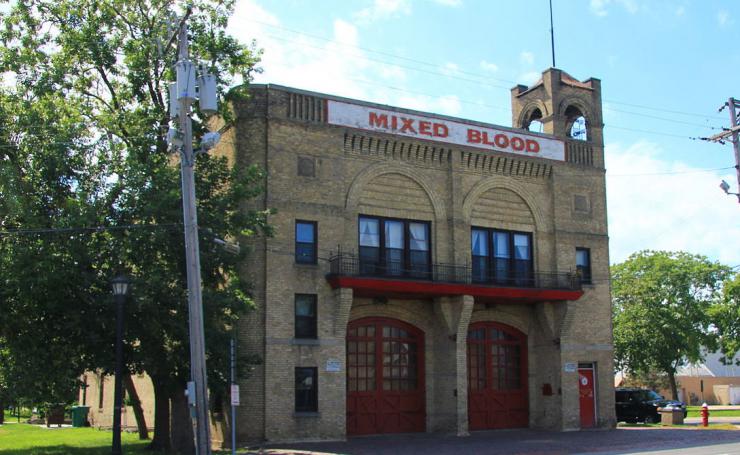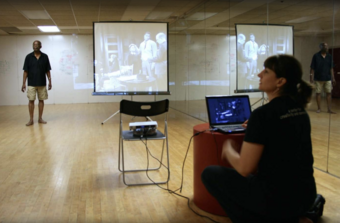Interview with Jack Rueler
This interview is adapted from the version that appears in Counting New Beans: Intrinsic Impact and the Value of Art. This book includes the final report from research firm WolfBrown on their two-year study "Measuring the Intrinsic Impact of Live Theatre," as well as twenty-four interviews with artistic leaders and patrons, and essays by Diane Ragsdale, Arlene Goldbard, Clayton Lord and Rebecca Novick—plus a foreword by Ben Cameron of the Doris Duke Foundation.

Rebecca: What kind of process do you use at your theatre to gather feedback from your audience for the artistic staff?
Jack: The surveying we do on our own is more demographic in its focus [than the Intrinsic Impact survey]. And, as a matter of fact, we collect it before the performance ever takes place, so there is no opportunity for the audience to say, “I had a great experience,” even if they wanted to. There is not opportunity for that qualitative feedback.
This may just sound pretentious as hell, but it is my impression that it is our job as leaders of nonprofit theatres to lead the audience to see that which they don’t yet know they want to see. To me, the big divide between commercial theatre and nonprofit theatre is that it is commercial theatre’s domain to say to an audience “What do you want to see?” and provide that. But it’s the domain of nonprofit theatres to say, “We need to have programming that realizes our mission and that has the highest professional standards.” But the decision should not be based on, “Is this what you want to see?” If you know what they want to see, then there’s something you’re not doing quite right as an artistic director. You need to be guessing what they want to see and try to take them to that place.
Rebecca: When you start from that point—that your job is to take them someplace they haven’t been—how do you know if they’ve gotten there?
Jack: I’m there a lot, in the house and in the lobby. There are three or four criteria I use when a show is over to see how we did in terms of mission realization, in terms of entertainment factor. I look inside and ask, “Did that turn out how we wanted, whether twelve people came or ten million?” The biggest question for any nonprofit, maybe for any business at all, is, “What are you trying to do and how well did you do at that?” So we ask that: what were our aspirations, and how did we do according to our own standards? Then we certainly also have the anecdotal experiential audience reaction by being in the room with people. And a lot of the time, given our mission, the “who” that comes is more important than how many people come.
This may just sound pretentious as hell, but it is my impression that it is our job as leaders of nonprofit theatres to lead the audience to see that which they don’t yet know they want to see.
Rebecca: Can you give me an example of a recent show of how you talked about that, how you figured who you thought the play was for?
Jack: Take the first show that we surveyed, the adaptation of House of the Spirits done in two languages. We were definitely aiming to get a bilingual audience since we did the show in Spanish and English, so it’s probably the only Spanish-language theatre in the [Minneapolis] area over a period of time. Attendant to that, we were trying to get Latinos to come; although, in our surveys, interestingly enough, a lot of the bilingual people that come do not self-identify as Latino. So there were a lot of Spanish-speaking Anglos who were attending. But each show that we do (whatever the topic of the show and whatever the population of the characters of the play) really targets our marketing.
Rebecca: When you’re in that selection process, do you think to yourself about what kind of impact you’re trying to have on the audience?
Jack: One of the core values of the organization is “predictably unpredictable.” Surprise is not only a factor we take into consideration, but has become one of our core values.
There are many factors that go into season selection. The first one is always, “Is this a reflection of our mission?” And our mission really has to do with a multiplicity of peoples coming together in the world of the play, usually for common purpose. So does it do that: model pluralism successfully? That’s always the first question that we ask.
Rebecca: So when you have this “predictably unpredictable” idea, are you looking for that to be the case for every show in the season?
Jack: Sometimes that predictable unpredictability comes through in the way in which you do it or the way it’s written. So I’d say there’s some element of that in everything—there aren’t shows that are more or less so. And that’s a little bit of an “eye of the beholder” thing, too. What’s surprising to one person is humdrum to another.
One of the things that we did this year that was very telling in our own survey work was, we solicited the patrons of the shows for contributions after they’ve seen the show. For House of Spirits we were only going to solicit those that also saw the first show, Cool Drink of Water, and we found that there was zero overlap of single-ticket buyers. None of the people that saw the second show saw the first show. For some theatres, that would be a sign of catastrophe. For us, that’s a sign that the targeted marketing we’re doing and the aim of the script and what we’re trying to do is on the path we want it to be.












Comments
The article is just the start of the conversation—we want to know what you think about this subject, too! HowlRound is a space for knowledge-sharing, and we welcome spirited, thoughtful, and on-topic dialogue. Find our full comments policy here